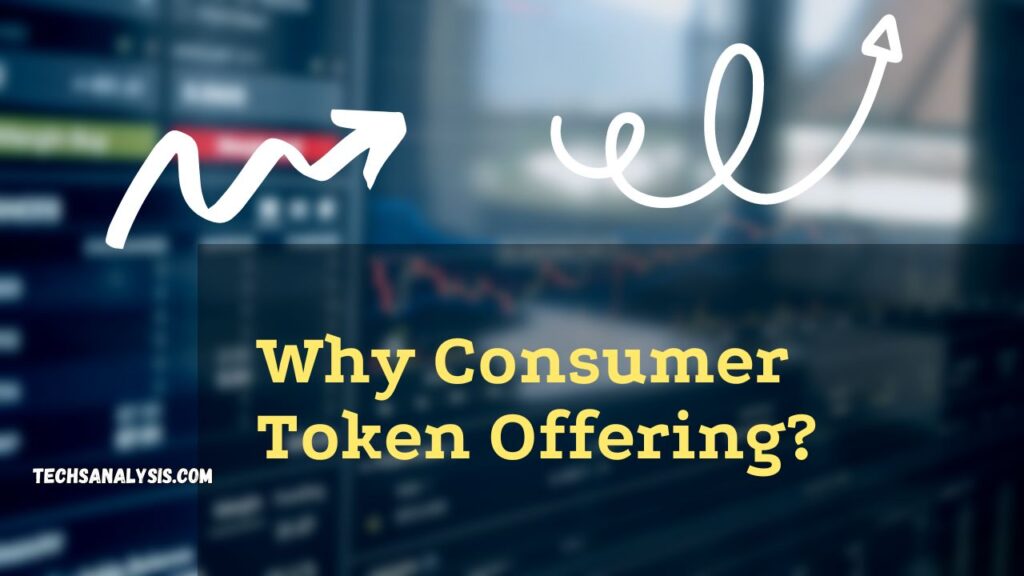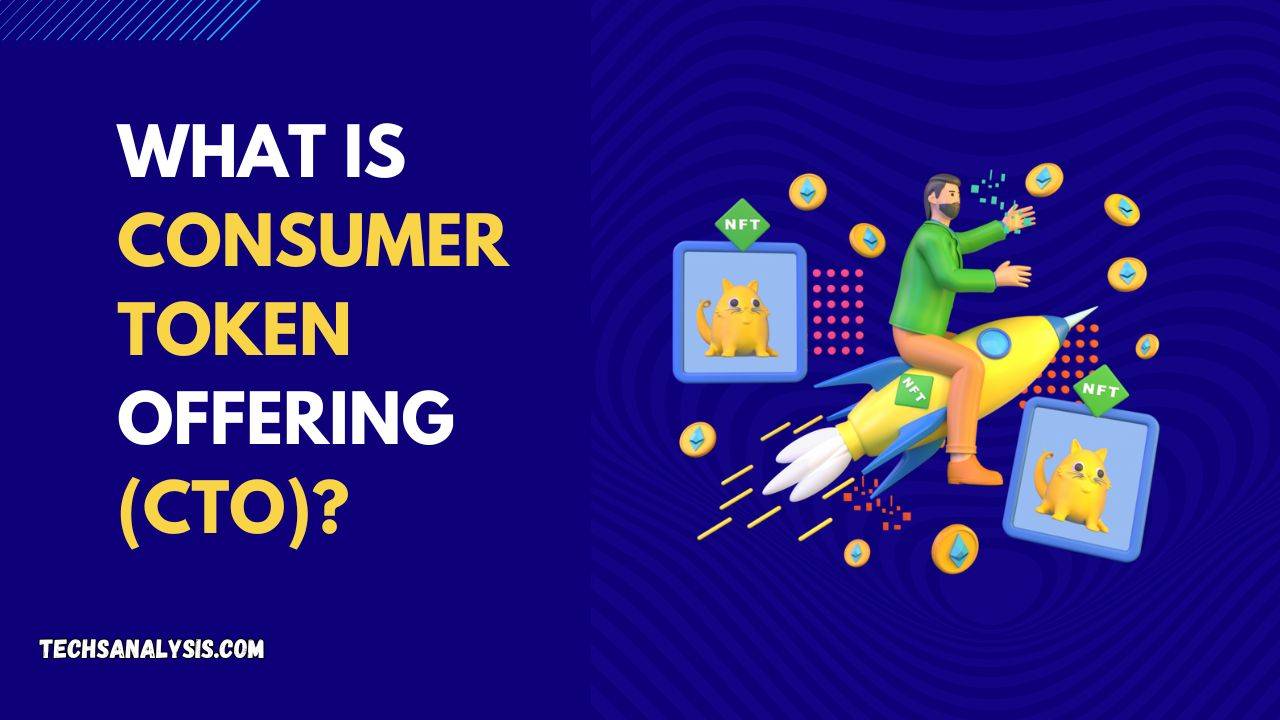Learn about Consumer Token Offering (CTO), a new cryptocurrency fundraising mechanism designed for consumers. Discover its potential impact and how to create a CTO.
Introduction to Consumer Token Offering
Blockchain technology continuously introduces new concepts, significantly impacting various industries. As blockchain gains traction, the cryptocurrency market evolves, presenting novel funding mechanisms for investors. One such emerging trend is the Consumer Token Offering (CTO). While relatively new, it holds the potential to revolutionize the cryptocurrency market by providing a more consumer-centric approach to token sales.
Table of Contents
Evolution of Funding Mechanisms in Cryptocurrency
Initial Coin Offerings (ICOs)
Before delving into CTOs, it’s essential to understand the evolution of funding mechanisms in the cryptocurrency world. The first major innovation was the Initial Coin Offering (ICO), which gained popularity in 2017. ICOs allowed startups to raise capital by selling tokens directly to the public. These tokens could represent a variety of things, from utility tokens used within a specific platform to security tokens that gave holders equity in a company.
ICOs were revolutionary but problematic due to a lack of regulation. Many ICOs failed to deliver on their promises, leading to significant losses for investors and a tarnished reputation for the mechanism.
Security Token Offerings (STOs)
In response to the issues with ICOs, Security Token Offerings (STOs) emerged in late 2018. STOs are more regulated, ensuring compliance with securities laws. They offer tokens that are backed by real-world assets, providing a more stable and less volatile investment option. STOs aimed to bring legitimacy and investor confidence back to the cryptocurrency fundraising space.
While STOs improved on many aspects of ICOs, they were primarily designed for accredited investors, limiting their reach. This limitation led to the development of a more consumer-friendly model: the Consumer Token Offering (CTO).
What is Consumer Token Offering?
Consumer Token Offering (CTO) is a fundraising mechanism similar to ICOs and STOs but with a distinct focus on the end consumer. Consumer tokens are sold exclusively to consumers who can use them to purchase services or products. Unlike securities or utility tokens designed for trading, consumer tokens are intended for immediate use within a specific ecosystem.
Consumer tokens are developed under the “consumer token framework” by The Brooklyn Project, ensuring they meet specific criteria for usability and compliance. These tokens are neither securities nor speculative assets, making them a safer and more practical option for consumers.
Key Characteristics of Consumer Tokens
- Consumptive Nature: Consumer tokens are designed to be used for specific services or products, not for trading or speculation.
- Regulatory Compliance: By adhering to the consumer token framework, these tokens aim to meet regulatory standards, reducing legal risks.
- User-Focused: The primary goal is to provide value to consumers through practical applications within a platform or ecosystem.
Why Consumer Token Offering?

Addressing Issues with ICOs and STOs
STOs addressed many issues inherent in ICOs, such as scams and weak projects, by introducing regulatory compliance and tokenizing real-world assets. However, STOs are limited to accredited investors, making it difficult to reach a broader consumer base. This limitation led to the development of Consumer Token Offerings (CTOs), which provide an improved model with consumptive consumer tokens designed for actual use rather than speculation.
Benefits of Consumer Token Offerings
- Enhanced Consumer Trust: By focusing on usability and compliance, CTOs aim to rebuild trust in cryptocurrency-based fundraising.
- Regulatory Clarity: The consumer token framework provides clear guidelines, making it easier for projects to comply with regulations and avoid legal issues.
- Wider Audience: Unlike STOs, which are restricted to accredited investors, CTOs are accessible to a broader audience, including everyday consumers.
- Practical Applications: Consumer tokens are designed for practical use, providing immediate value to holders through access to services and products.
Regulatory Perspective on Consumer Token Offerings
The acceptance of CTOs by regulators like the US Securities and Exchange Commission (SEC) is crucial for their widespread adoption. The SEC has deemed cryptocurrencies like Ethereum and Bitcoin as non-securities, providing a foundation for the acceptance of consumer tokens.
Potential Regulatory Challenges
- Classification of Tokens: One of the primary concerns is whether consumer tokens will be classified as securities. The consumer token framework aims to ensure that these tokens are not classified as securities by focusing on their consumptive nature.
- Compliance with Existing Laws: Projects must ensure compliance with various regulations, including securities laws, tax laws, data protection, and privacy laws.
- Ongoing Regulatory Changes: The regulatory landscape for cryptocurrencies is continuously evolving, and projects must stay updated on changes to ensure compliance.
How to Create a Consumer Token?
Creating a consumer token involves following guidelines from The Brooklyn Project’s consumer token framework. This framework ensures that tokens meet specific criteria for usability, transparency, and regulatory compliance. Here are the key steps involved:
Consumer Token Design
- Usability: The token should be designed with practical use in mind, providing access to content, goods, or services.
- Avoiding Financial Instrument Characteristics: The token should not have equity-like economic rights or any features resembling a financial instrument.
- Consumptive Nature: Ensure that the token is usable within a specific ecosystem for accessing services or products.
Project Governance and Operation
- Transparent Governance: Establish a transparent and organized governance structure, with clear roles and responsibilities.
- Continuous Transparency: Provide ongoing transparency regarding the project’s progress and any changes to its structure.
- Decentralized Control: Define which aspects of the project are managed centrally and which are controlled in a decentralized manner.
Responsible Token Distribution
- Fair Distribution: Ensure that token distribution is fair and transparent, avoiding practices that encourage speculation.
- Transparency of Terms: Clearly communicate the terms of token distribution to potential buyers.
- Avoiding Speculative Practices: Minimize practices such as token discounts or bonuses that create expectations of financial returns.
Purpose of Token Distribution
- Clear Purpose: Clearly state the purpose of token distribution and the planned use of proceeds.
- Accountability: Promote accountability for any funds raised and provide transparency regarding their use.
Token Supply
- Transparent Supply Parameters: Define and maintain transparent parameters for token supply, including rules for minting and burning tokens.
- Governance of Token Inventory: Establish governance parameters for token inventory and ensure they can be audited where applicable.
Mitigation of Improper Trading and Conflicts
- Fair Trading Practices: Ensure fair trading practices in secondary markets and manage potential conflicts of interest.
- Avoid Market Manipulation: Do not engage in practices that manipulate token value or spread false information.
Token Security and Safety
- Security Measures: Implement effective security measures to protect tokens and ensure the project’s safety.
- Third-Party Audits: Ensure that smart contracts undergo sufficient third-party audits.
- Transparency of Risks: Inform token buyers of any security risks or vulnerabilities discovered in the technology.
Marketing Practices
- Accurate Representation: Ensure that marketing practices accurately represent the project and its products.
- Compliance with Laws: Do not market tokens as financial investments unless compliant with applicable laws.
- Fair Advertising: Ensure that product advertising is fair and does not mislead token buyers.
Protecting and Empowering Consumers
- Consumer Protection Mechanisms: Implement mechanisms to protect and empower token purchasers, including refund options if the project is abandoned.
- Clear Responsibilities: Clearly outline the responsibilities and expectations of token purchasers in legally binding documents.
Compliance with Regulations and Applicable Laws
- Regulatory Compliance: Make reasonable efforts to comply with all relevant regulations and laws, including tax laws, securities regulations, and data protection laws.
- KYC and AML Compliance: Implement Know-Your-Customer (KYC) and Anti-Money Laundering (AML) procedures to ensure compliance with financial regulations.
Examples of Consumer Token Framework Implementations
Several crypto startups have used the consumer token framework to launch CTOs, demonstrating the practical applications of this model:
CIVIL
CIVIL is a blockchain-based journalism network that sells consumer tokens to newsreaders. Token purchasers gain access to the network and its content, fostering a decentralized and ethical news platform.
FOAM
FOAM is an alternative to GPS that uses blockchain technology to provide accurate location data. The project aims to enhance applications like self-driving vehicles by preventing false location information.
The Future of Consumer Token Offerings
Consumer Token Offering is still in its nascent stage but holds promise as an alternative to STOs. The model’s focus on usability, regulatory compliance, and consumer protection makes it an attractive option for both projects and investors. As more projects adopt the consumer token framework, the cryptocurrency market may see a shift towards more practical and user-focused token offerings.
Conclusion
Consumer Token Offerings represent a significant evolution in the cryptocurrency fundraising space. By focusing on usability, regulatory compliance, and consumer protection, CTOs offer a more practical and accessible alternative to ICOs and STOs. As the regulatory landscape continues to evolve, CTOs may become a mainstream option for projects looking to raise funds and engage with their user base.
At LeewayHertz, our blockchain experts are conducting in-depth research on CTOs to explore their potential benefits for consumers and businesses. If you’re interested in learning more about Consumer Token Offerings and how they can benefit your project, consult with our experts today.

